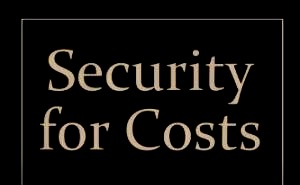The amount of reasonable conduct money to be paid to a professional to testify occasionally arises in estate litigation.
Conduct money has historically been paid to a witness who has been subpoenaed to trial or examination for discovery, in an amount sufficient to defray the reasonable expenses of going to and from court, including overnight accommodation if necessary.
In short, the case law seems to indicate that a professional may be able to charge his or her hourly rate for testimony preparation, but is restricted in attendance fees to only $20 per day as per every other witness under appendix C schedule 3 of the Supreme Court rules.
Under appendix C schedule 3 a witness is allowed a reasonable sum for the time to prepare if the preparation is necessary. – Van de Mortel v Flagg 2006 BC SC 689 at paragraphs 18 – 21.
The leading authority on the issue of what might constitute a reasonable fee for preparation is Northland Properties LTD v. Equitable Trust Company (1992), 71 BCLR 124 at pages 128 – 30
Reasonable sum for preparation depends on three factors:
1. Whether the witness was a mere bystander, in which case his or her moral claim for compensation should be higher than that of a witness who is voluntarily involved;
2. Whether the witness has already been paid for the services which are the subject matter of his or her testimony;
3. whether the required preparation involves skills or training for which the witness is compensated in his or her regular employment. The ordinary earnings of a witness have little relation to the proper amount to be paid. The witnesses own periodic income is not the norm for payment for preparation.
The decision refers to an earlier case Fraser v. Fraser (1983) , 45 BCLR, 21, at page 22 which allow the claim of a lawyer for his usual hourly rate – to be established to the satisfaction of the assessing officer for time spent in preparation and in testifying at trial as an ordinary, but essential witness.
Where professionals called upon to testify as to the observations only, he or she may be allowed remuneration for preparation but is restricted to the $20 witness fee for attending trial to testify. United contractors LTD v . The Queen unreported January 14, 1994 new Westminster registry number C891753 BCSC
See also Luis v Marchiori 2018 BCCA 317 which discusses inter alia the difference between expert fact evidence and expert opinion evidence .
A treating doctor for example is a witness as to observations and the testimony is not opinion evidence.
Opinion evidence is where opinion is offered beyond what the actual evidence itself is capable of revealing.










